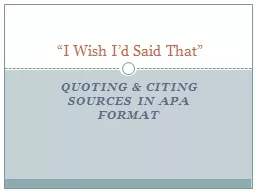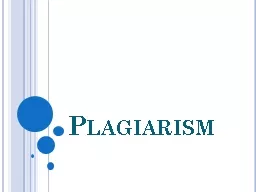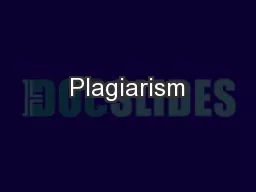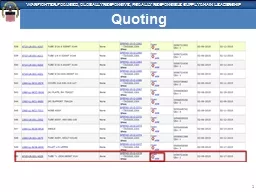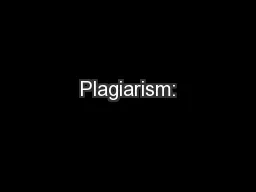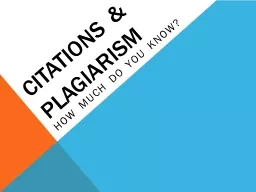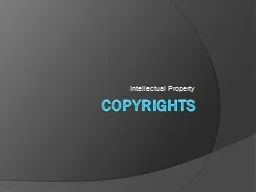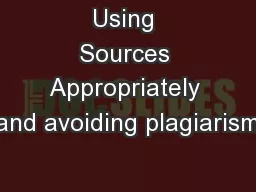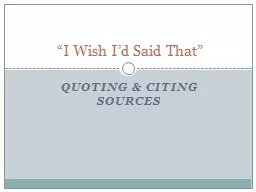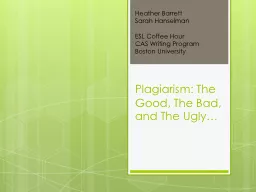PPT-Plagiarism, Quoting, & Citing Sources
Author : phoebe-click | Published Date : 2018-02-22
APA Format I Wish Id Said That Plagiarism APA Publication Manual record even sources of inspiration as well as direct borrowings pp 1516 Repeating four
Presentation Embed Code
Download Presentation
Download Presentation The PPT/PDF document "Plagiarism, Quoting, & Citing Source..." is the property of its rightful owner. Permission is granted to download and print the materials on this website for personal, non-commercial use only, and to display it on your personal computer provided you do not modify the materials and that you retain all copyright notices contained in the materials. By downloading content from our website, you accept the terms of this agreement.
Plagiarism, Quoting, & Citing Sources: Transcript
Download Rules Of Document
"Plagiarism, Quoting, & Citing Sources"The content belongs to its owner. You may download and print it for personal use, without modification, and keep all copyright notices. By downloading, you agree to these terms.
Related Documents

